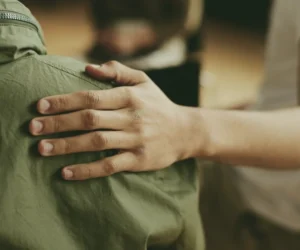Why Do I Have Bruises After Drinking? Causes & Insights

Alcohol intake may cause dehydration, which can compromise your skin’s health and make it more sensitive to bruising and other possible injuries. Staying hydrated when drinking alcohol might help you avoid unpleasant side effects like bruising. Excessive or unexplained bruising, including alcohol-induced bruising, should be evaluated by a healthcare professional to rule out underlying health issues. The consumption of alcohol affects alcoholism treatment your coordination and judgment and, likely increases the chances of accidents – bumping into things and falling. Most bruising after drinking often stems from unseen or unnoticed injuries.
People on Blood-Thinning Medications
- In addition to filtering your blood, your liver’s job involves blood cell management.
- If your bruise doesn’t improve within two weeks, or if you start to notice frequent, unexplained bruises—whether you’re drunk or sober—call your doctor.
- To allow the liver to heal and the risk of bruising to drop, you must stop drinking altogether.
- Alcohol use disorder includes a level of drinking that’s sometimes called alcoholism.
- Yes, alcohol can cause skin discoloration in the form of bruises or broken blood vessels.
The combination can worsen the symptoms and raise the probability of bruising or other types of injury. Vitamin K supplements or foods rich in vitamin K can help support blood clotting and reduce the likelihood of bruising, especially for individuals who consume alcohol regularly. Alcohol-induced bruising may take longer to heal due to alcohol’s impact on blood clotting mechanisms and potential vitamin deficiencies. Recognizing the signs of alcoholism is the first step toward recovery. If you’re struggling to control your drinking or are worried about the health effects, reach out for professional help.
- According to the CDC, moderate drinking is defined as having two standard drinks or less per day for men and one drink or less per day for women.
- Furthermore, providing your body with essential nutrients can help to support optimal health.
- Taking venlafaxine exactly as prescribed can also help prevent interactions.
- Seeking medical care for proper nutrition and managing any underlying liver conditions can help recover normal clotting ability.
- Alcoholism is a colloquial term, and it really isn’t a politically correct way to refer to an alcohol addiction.
What Your Kids Really Think About Your Drinking (And Why It Matters)

If you did not get paperwork with venlafaxine, ask your pharmacist to print a copy for you. If you have trouble reading or understanding this information, your doctor or pharmacist can help. It’s also important to understand venlafaxine’s label and other paperwork that may come with the drug. The paperwork, sometimes called the patient package insert or medication guide, may have other details about interactions. If you have other questions about consuming caffeine during your venlafaxine treatment, talk with your doctor. If you need to take a urine drug screen, be sure to let the person ordering and administering the test know that you’re taking venlafaxine.
The Link Between Alcohol and Poor Sleep: A Contributing Factor to Bruising
There are currently no reports of venlafaxine interacting with vaccines. If you have questions about receiving certain vaccines during your venlafaxine treatment, talk with your doctor. For this reason, it’s important to check with your doctor or pharmacist before taking any of these products while taking venlafaxine. There are currently no reports of venlafaxine interacting with vitamins.

Avoid Risky Activities
If you take venlafaxine with an antibiotic it interacts with, your doctor may prescribe a lower dosage of venlafaxine for you. You should not take a higher dose of either medication than your doctor prescribes. People with alcoholism can develop erosive gastritis, where the stomach lining wears away.
- Alcohol and unexplained bruising could point to liver damage from drinking.
- All of these impairments can lead to more morning after bruises, but they can also make driving extremely dangerous.
- For more information about some of these interactions, see the “Drug interactions explained” section.
- An alcohol use disorder is a legitimate medical condition that causes lasting changes in the brain.
- Alcohol’s effects on skin can be quite visible not long after drinking.
Impaired Platelet Function

In some people, the initial reaction may feel like an increase in energy. But as you continue to drink, you become drowsy and have less control over your actions. A traditional bruise comes about after your body endures some impact. Running into furniture, falling into a something hard, or being struck by a flying object could all leave you with bruises. If you’ve noticed any of the above symptoms, you may consider going cold turkey to improve your health. While alcohol sends you into dreamland quicker, there’s a good chance that having too much will lead to a night of tossing and turning once its sedative effects wear off.
Q3: Do certain alcoholic beverages increase the risk of bruising more than others?
So, let us discuss how to prevent bruising from alcohol, such as drinking responsibly, keeping hydrated, eating before drinking, and a few more. It can be confusing and worrisome to find unexplained bruises after drinking alcohol. This article will help you understand why bruises occur after drinking, what are bruises after drinking, give tips on how to prevent them, and let you know when to visit a doctor. Let’s break down the mystery of these bruises and learn to take better care of your body. Most people who drink heavily will progress through the stages of liver damage described above alcohol and bruising over time. But you may also bleed a little more if you cut yourself while drinking.
Q10: Can alcohol affect bruising for individuals with certain medical conditions?
And since alcohol is a diuretic, you’ll probably visit the bathroom more frequently at night, which can significantly hinder sleep. If you’ve ever had to nurse a hangover, nausea and vomiting are commonly part and parcel of the ordeal. While throwing up can make you feel miserable, it is one of your body’s self-defense mechanisms to remove excess toxins from the alcohol consumed. According to the CDC, moderate drinking is defined as having two standard drinks or less per day for men and one drink or less per day for women. In other words, bruising alone isn’t enough to diagnose alcoholism, but it can be a sign. When that happens, the person convulses uncontrollably and may harm themselves or others in the process, potentially leading to bruises.
Night sweats
Over time, the damage done can lead to alcoholic neuropathy, where the peripheral nerves in your limbs have been badly damaged by alcohol. More seriously, this reduced clotting leads to an increased risk of stroke. While not inevitable, alcohol-related bruising and injury can be better prevented with education, risk reduction strategies, and basic safety precautions. In these situations, it is generally recommended to avoid alcohol altogether given the compounding effects on bleeding risks. The toxic byproducts of alcohol metabolism can damage bone marrow, which slows production of platelets and blood cells. If you notice these patterns of abnormal bruising, see your doctor for evaluation even when sober.

A false positive means the test shows amphetamines or PCP in your urine, even if you haven’t used these substances. Venlafaxine can interact with a urine drug test (also called a urine drug screen). This test is used to check your urine for the presence of certain prescription medications and illegal or recreational drugs. Venlafaxine interacts with certain antibiotics, which are prescribed to treat bacterial infections. On dark skin, petechiae may not always show up, which means a doctor could miss them. They may be visible in areas with less melanin, such as the forearms.
